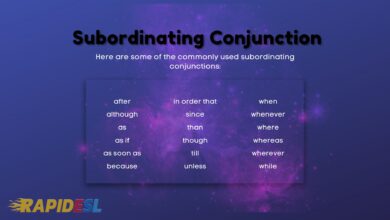Differentiating Between Restrictive and nonrestrictive Clauses
Differentiating Between Restrictive and nonrestrictive Clauses
Restrictive and nonrestrictive clauses can be challenging to grasp, even for native speakers. In this article, we’ll explore the difference between restrictive and nonrestrictive clauses using simple explanations and new examples.
First, let’s start by understanding what a clause is.
Clauses
Be cautious; the word “clause” itself is a noun, and we explained it in a previous post on our website. However, the kind of clause we’re discussing here is grammatical.
Almost every sentence contains a clause or is a clause. Technically, it’s a group of words with a verb or subject. Think of it as the part of the sentence used to describe the topic or idea you’re talking about.
Basic Types of Clauses
Main Clause:
Every sentence must have a main clause or main idea. For example, the main clause in the following sentence is an action.
Main clauses or sentences like this one can stand alone and make sense on their own.
Subordinate Clauses:
Longer sentences may have several clauses. One clause will be the main idea, while the others will be subordinate clauses, providing additional information that relies on the main clause to make sense.
My dog loves to run but gets hot very quickly.
Subordinate clauses, which are secondary information, can’t stand alone and need the main clause to be understood.
Now, let’s dive into the concept of restrictive and nonrestrictive clauses.
Restrictive And Nonrestrictive Clauses
Restrictive and nonrestrictive clauses provide information related to the main clause. We create them by combining the following types of clauses:
Relative Clauses:
Relative pronouns like who, what, which, when, where, and that are used to begin relative clauses.
Adjective Clauses:
Adjective clauses modify a noun or pronoun. They always have a subject and verb and start with words like which or that. They answer questions about quantity or some other detail.
Interestingly, many people see relative and adjective clauses as the same, even though we distinguish them, as they often have similar meanings.
Sometimes, because some sentences can be understood in more than one way, restrictive and nonrestrictive clauses help us understand the precise meaning of the main clause or sentence.
Restrictive (Essential) Clauses
A restrictive clause is a vital part of the sentence that provides information necessary to understand how a noun should be interpreted. Restrictive clauses usually do not use commas, and removing them would change the phrase’s meaning.
These clauses are essential to the sentence’s intended purpose, which is why they are also called essential clauses.
Here are a few examples of restrictive clauses in italics, along with reasons why we can’t change them:
- I drove to Paris with the woman who used to live there.
- The painting which you spilled water on is a priceless masterpiece.
As you can see, the restrictive clause not only describes the noun but also offers valuable information about the noun’s identity.
Nonrestrictive (Nonessential) Clauses
A nonrestrictive clause is unnecessary, as it provides more information than is needed to understand the entire sentence. Commas or even brackets often set off this additional information. If we removed a nonrestrictive clause from a sentence, the meaning wouldn’t change.
Here are some examples of nonrestrictive clauses:
- Michael Jordan, a famous basketball player, played professional baseball for a few years with a well-known team.
- Jenny, who is our boss, ordered us to report to her office at the end of the day.
Clauses are part of our everyday speech. Learning correct sentence structure and word order will help you avoid any confusion about them. Instead of trying to memorize grammar rules about restrictive and nonrestrictive clauses, just ask yourself this question before speaking:
Is the information necessary for the sentence to be correctly understood, or is it just extra information?
The answer will help you determine if it is restrictive or not.
Check other articles:





